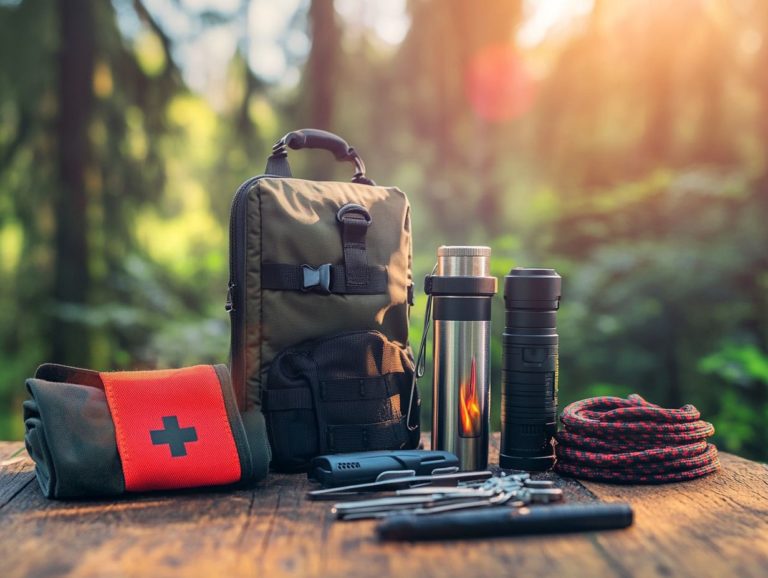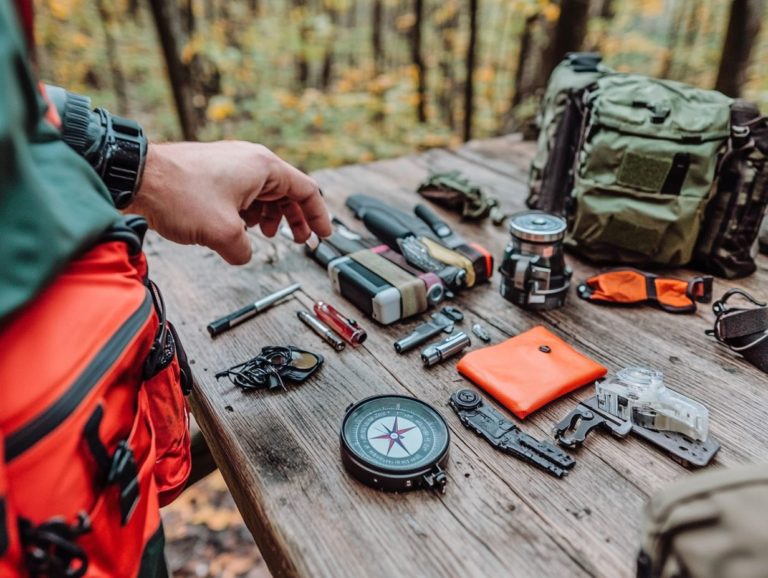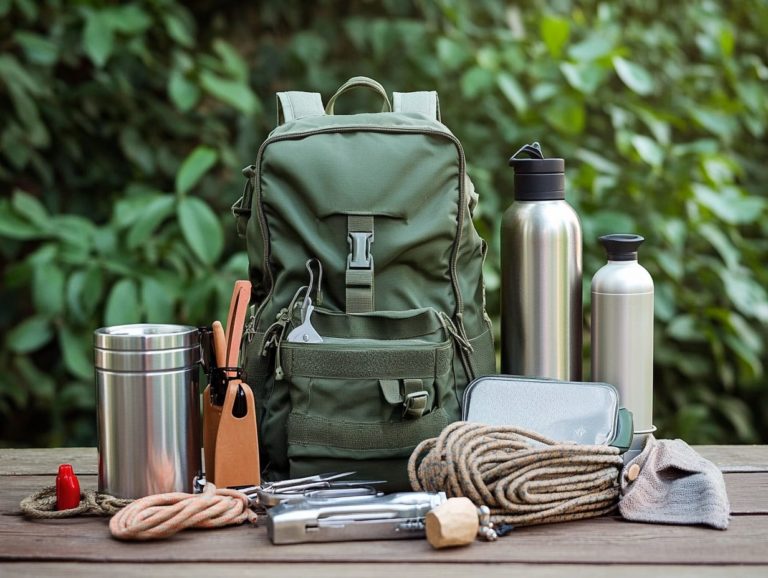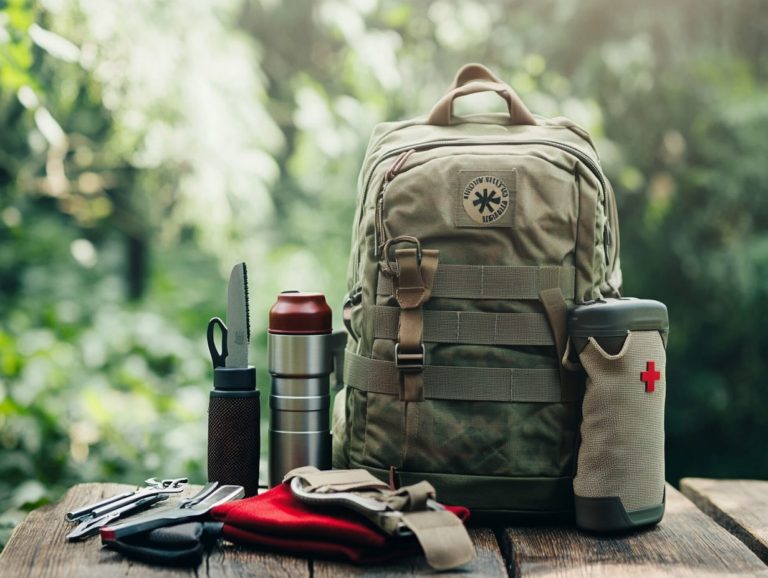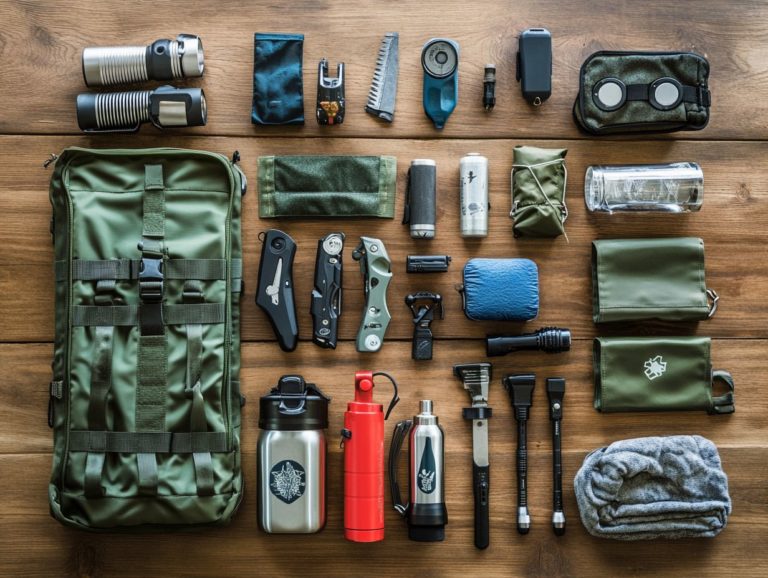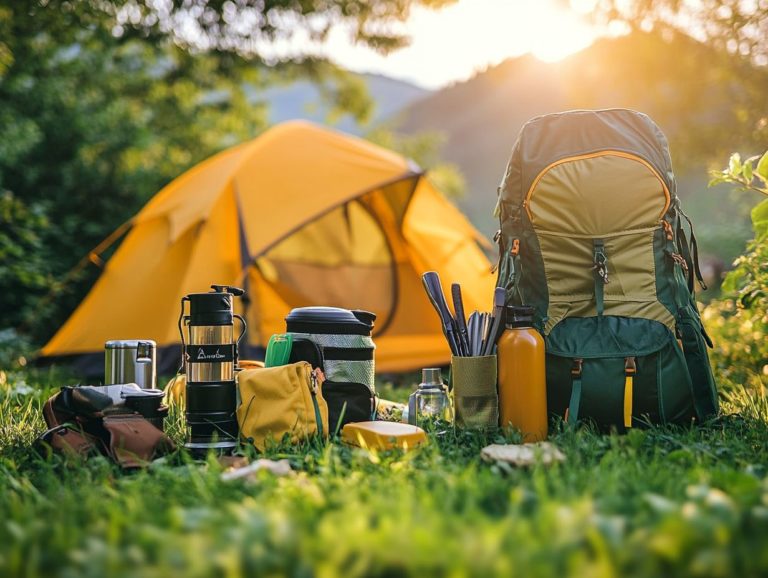How to Select Survival Gear for Kids
In today’s unpredictable world, preparing your children for emergencies is essential. This article covers crucial gear that can make a difference in survival situations designed for kids.
It discusses basic items for their safety and offers tips for selecting age-appropriate equipment. You ll discover vital survival skills and ways to help your child become familiar with their gear.
By the end, you ll know how to empower your kids to face emergencies with confidence.
Contents
- Key Takeaways:
- Essential Gear for Kids
- How to Choose the Right Gear for Your Child
- Preparing Your Child for Emergencies
- Additional Tips for Preparing Kids for Emergencies
- Frequently Asked Questions
- What is considered essential survival gear for kids?
- How do I determine what size survival gear to get for my child?
- Can I pack my child’s favorite toy in their survival gear?
- What should I look for in a durable backpack for my child’s survival gear?
- Are there any specific items I should include in my child’s first aid kit for outdoor adventures?
- How often should I check and update my child’s survival gear?
Key Takeaways:
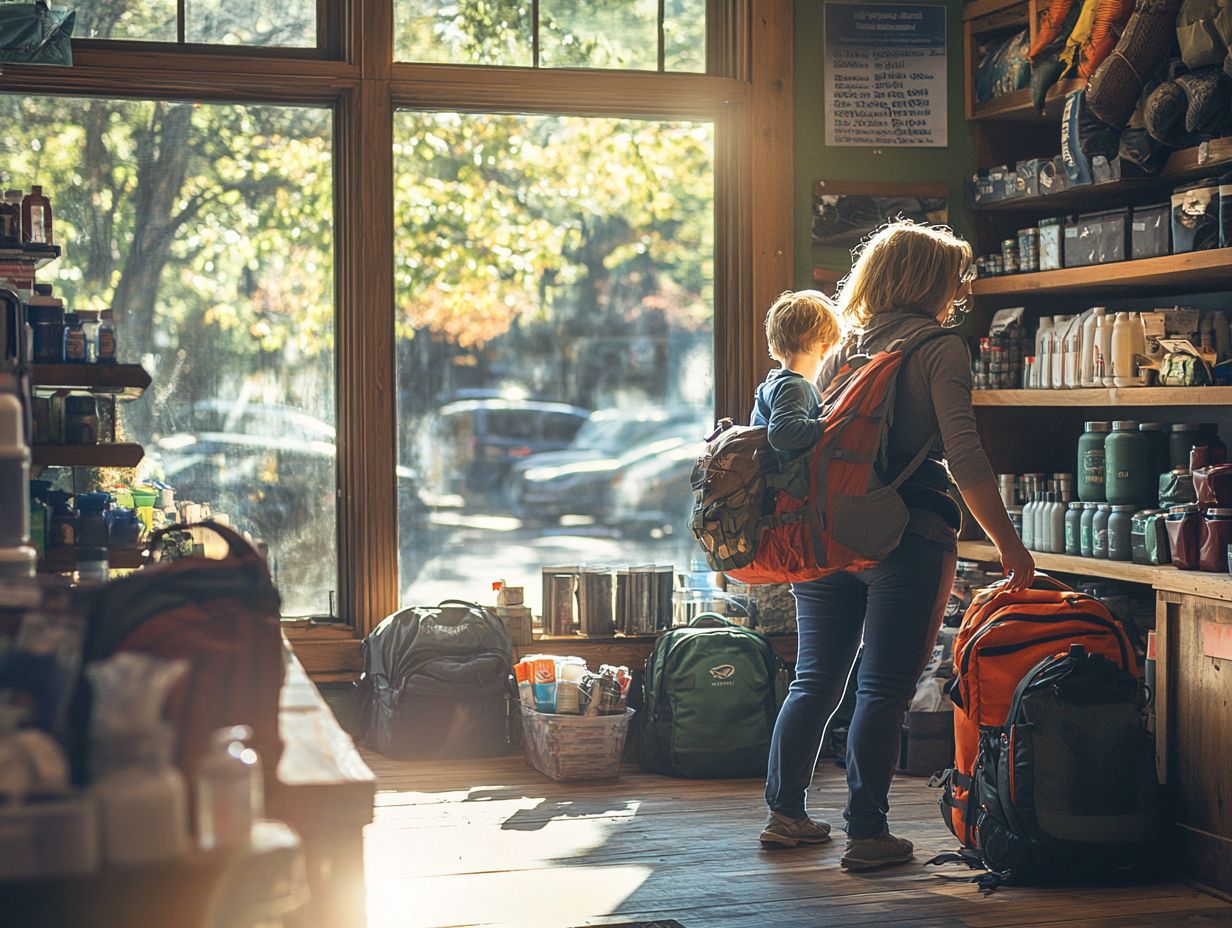
- Prepare kids for emergencies to ensure their safety and well-being.
- When selecting survival gear, consider their age, size, and specific needs.
- Teach children basic survival skills and practice using the gear regularly.
Why is it Important to Prepare Kids for Emergencies?
Preparing your kids for emergencies is crucial. It gives them essential skills and knowledge to handle crises effectively.
When children know safety protocols, they can navigate the wilderness confidently, whether camping or facing an unexpected emergency at home.
Involving them in wilderness survival discussions builds practical knowledge and self-reliance. Teach them about teamwork, like staying together on hikes and having a meeting point in case of separation.
These experiences build resilience as your children learn to tackle challenges head-on. Such skills nurture confidence and adaptability qualities that will benefit them throughout their lives.
Essential Gear for Kids
When going outdoors with your kids, the right gear is essential. It ensures their safety and makes the camping experience enjoyable.
A good survival kit for kids should include critical items like food, water, shelter, and first aid supplies.
Don t forget to include entertainment options like activity books and toys to keep them engaged during quieter moments. Prioritize lightweight and functional gear tailored to your kids’ specific needs.
Basic Necessities for Survival
The essentials for wilderness survival include food, water, shelter, and emergency supplies. These are key components for keeping you and your kids safe and comfortable.
Having a well-prepared survival kit that boasts an emergency blanket, a first aid kit, and sufficient food and water can significantly enhance your family’s ability to endure challenging situations.
It’s essential to educate your children about these basics. Ensure they grasp how to use them effectively during emergencies or outdoor adventures.
Equipping your kids with a solid understanding of these necessities instills confidence and resilience. Food, for instance, isn t just about energy; it plays a psychological role in lifting spirits.
Water is crucial for hydration, especially in warmer climates where kids might not notice they’re losing fluids. A strong, easy-to-carry shelter offers protection from harsh weather.
An emergency blanket helps retain body heat and is easy to carry. A well-stocked first aid kit is a vital resource, ready to address minor injuries before they escalate.
By involving your kids in conversations about these supplies, you prepare them for potential emergencies while cultivating their appreciation for nature and the importance of safety.
Special Considerations for Children
When preparing kids for camping and survival, consider their unique needs to ensure their safety and comfort during outdoor activities.
Children require tailored gear, including proper clothing, lightweight backpacks, and engaging entertainment options like puzzles and crayons to keep them occupied.
Think about how to make the experience fun and educational. This will help your children develop a love for the outdoors while fostering essential survival skills.
Choosing gear that fits your child’s size and skill level is crucial. Prioritize their comfort in various environments, especially with unpredictable weather.
Lightweight, moisture-wicking fabrics help keep kids dry by drawing sweat away from their bodies. Water-resistant footwear provides the necessary support for adventurous trails.
Integrating entertainment items into the camping kit serves to occupy them during downtime and stimulates their creativity and imagination.
Make games and storytelling part of the routine. This sustains their interest and enthusiasm, ensuring outdoor experiences become about creating lasting memories.
How to Choose the Right Gear for Your Child
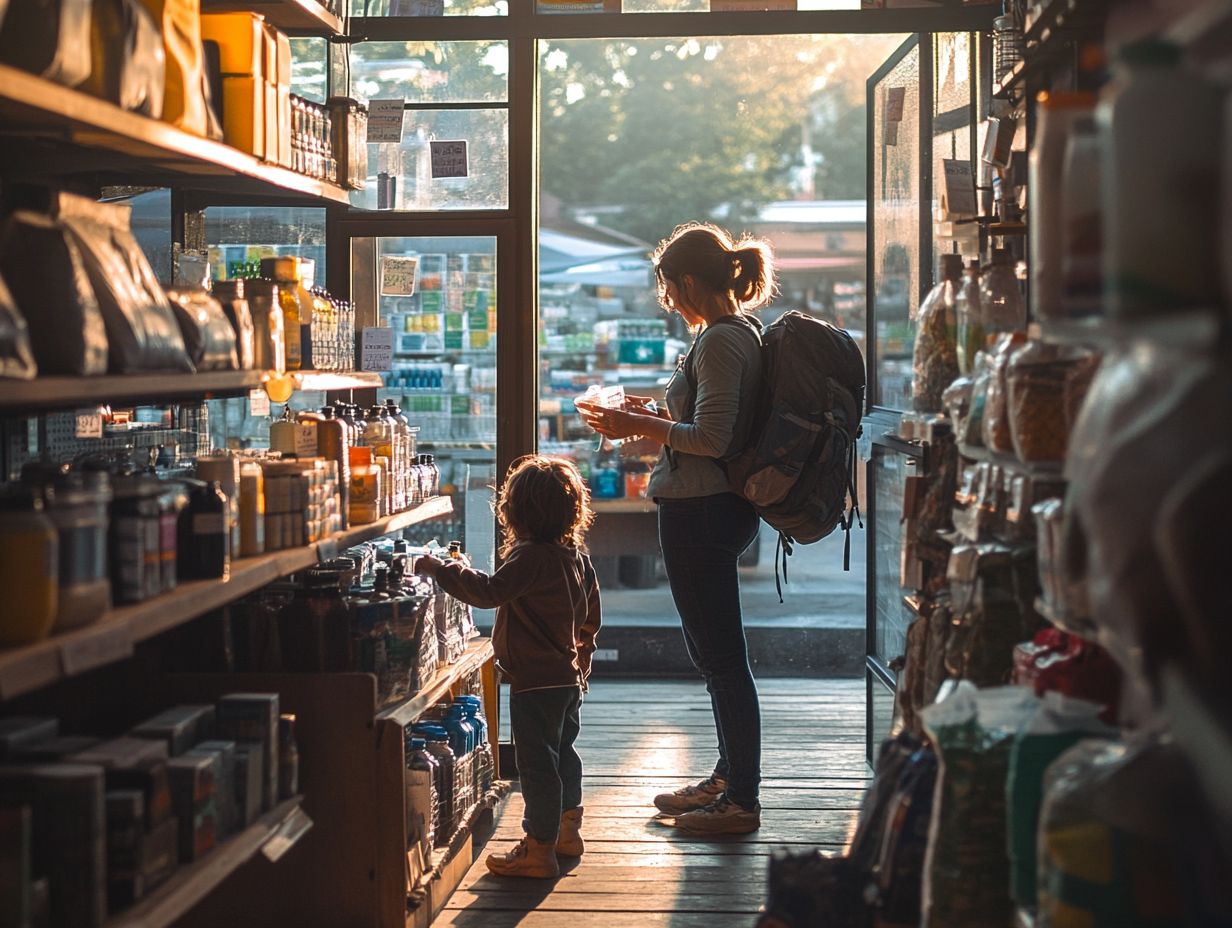
Selecting the right gear for your child is crucial for ensuring their safety, comfort, and overall enjoyment in outdoor adventures or emergencies. This includes having appropriate clothing for various weather conditions.
Consider factors like age-appropriate sizing and the specific demands of your child’s activities. Choose lightweight backpacks, durable clothing, and functional safety gear.
It s essential to prioritize equipment that aligns with the outdoor experiences you re planning. Whether it s hiking, camping, or preparing for emergencies, ensure your child feels confident and capable in the great outdoors.
Age-Appropriate and Size-Appropriate Gear
Selecting age-appropriate and size-appropriate gear for kids is essential for ensuring their safety and enhancing their outdoor adventures. When gear fits well, it promotes comfort and encourages children to actively participate in activities like camping, hiking, or training for emergencies.
You should assess the fit and functionality of items such as backpacks, clothing, and footwear. Make sure they meet your child’s specific needs based on age, body size, and the need for a change of clothing. This careful consideration maximizes safety and usability in various conditions.
Wearing the wrong size can cause discomfort. This takes away from the fun of outdoor adventures. For instance, poorly fitted footwear might result in blisters or even injuries, while backpacks that are too large or small can strain your child s back or shoulders. The importance of proper sizing is particularly evident in helmets; a secure yet comfortable fit is crucial for effective protection.
Make sure to get weather-appropriate clothing that allows for adequate movement, as restrictive layers can hinder your child’s ability to stay active. By meticulously selecting gear, including understanding how to use hiking gear for survival, you can ensure a safer and more enjoyable experience for the young adventurers in your life.
Factors to Consider when Selecting Gear
When selecting gear for kids, several key factors are important for optimal safety, comfort, and durability during outdoor adventures or emergency situations. Check for adjustable features on clothing and gear. Assess the materials used, the gear s intended purpose, and how well it meets your child’s specific needs and preferences, including weight and ease of use.
Compliance with safety standards is essential, as gear designed for children must meet specific guidelines for effective protection. Durability is equally important; high-quality materials are necessary to withstand rough handling and unpredictable weather that often accompanies outdoor activities.
Usability how easily your child can operate or manage the equipment is crucial. This ensures they can engage confidently without needing assistance. Consider adjustable features or lightweight options to enhance their experience, fostering independence while promoting safe exploration.
Preparing Your Child for Emergencies
Getting your child ready for emergencies is crucial for their safety and fun! By equipping them with essential training and survival skills, you enable them to navigate unexpected situations with confidence.
Engage your kids with fun activities like building a shelter or starting a fire. These activities deepen their understanding of wilderness survival and boost their self-assurance in emergency scenarios.
As a parent, you play a crucial role in this preparation. Ensure that your children are not only knowledgeable but also capable when confronted with challenges in the great outdoors.
Teaching Basic Survival Skills
It s essential to teach your kids basic survival skills! Skills like building a shelter, finding food and water, and using safety gear such as pocket knives and flashlights enable them to feel confident in the wilderness.
By nurturing these vital abilities, your children learn how to tackle challenging situations while developing a sense of independence and self-reliance. For instance, practicing building a makeshift shelter from natural materials enhances their problem-solving skills and teamwork. Identifying edible plants and locating fresh water sources turns into an exciting scavenger hunt, instilling resourcefulness and environmental awareness.
Create enjoyable family outings where these skills are practiced in real-time. This transforms the learning process into an adventure that fosters a lasting appreciation for nature and safety.
Practice and Familiarization with Gear
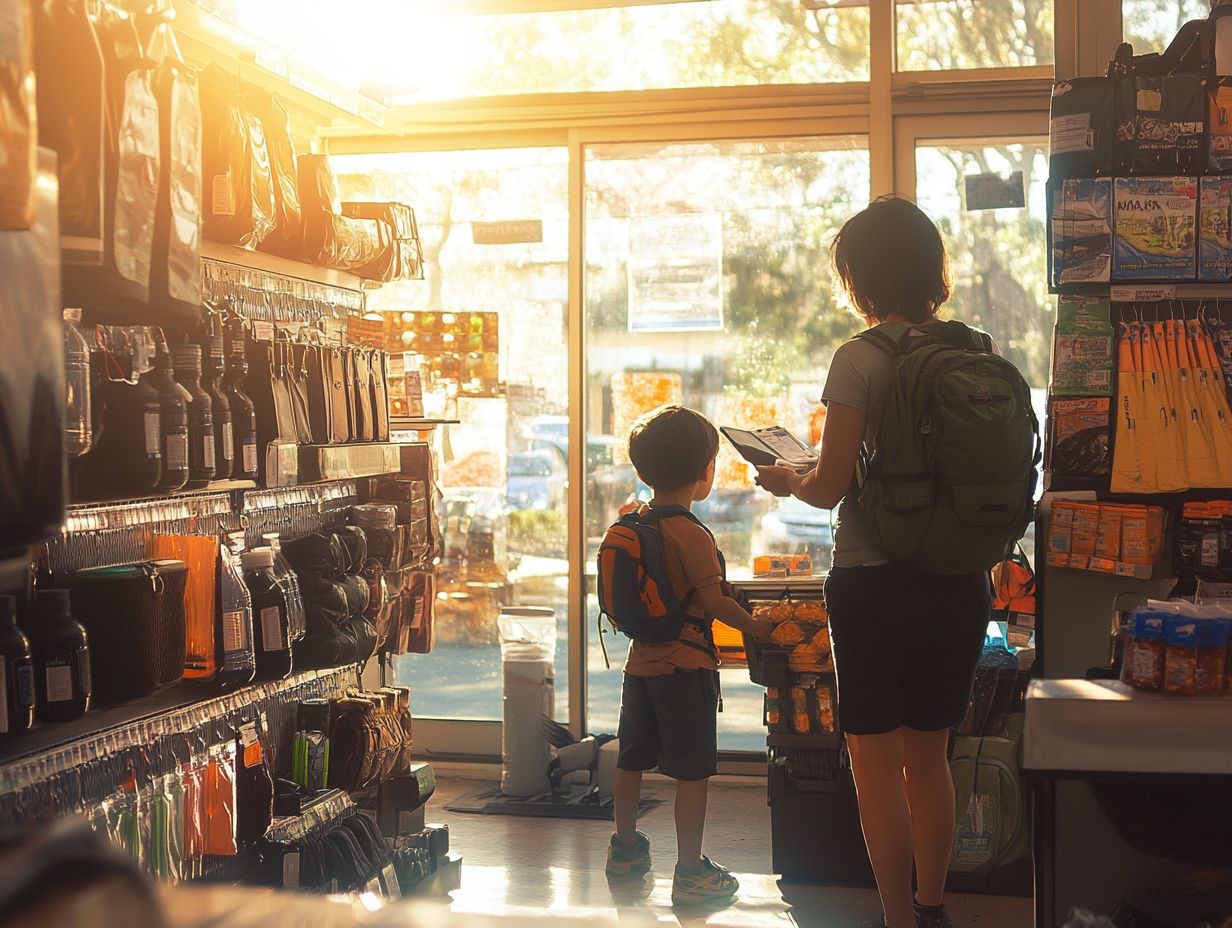
Regular practice and familiarity with gear are essential for ensuring that children feel at ease and proficient in using their equipment during emergencies or outdoor activities. By dedicating time to teach them how to properly handle items like first aid kits, flashlights, and fire starters, you can significantly boost their confidence and safety in the wilderness.
Create exciting hands-on practice sessions that your kids will love! Incorporate games and activities that emphasize the importance of gear usage and safety protocols.
Engaging your children in mock scenarios allows you to demonstrate the practical applications of their gear, transforming the learning process into an enjoyable and educational experience. For example, organizing a mock camping trip provides a controlled environment for them to explore the functionalities of their equipment.
Involving them in group activities like scavenger hunts or survival skill challenges further solidifies their understanding and retention of how to use their gear.
Encouraging discussions about their experiences promotes critical thinking and problem-solving skills. This comprehensive approach not only readies children for real-life situations but also nurtures a sense of responsibility and teamwork.
Additional Tips for Preparing Kids for Emergencies
Along with hands-on training and survival skills, several strategies can elevate your child’s preparedness for emergencies, particularly regarding communication and safety plans.
Establishing a clear safety plan that includes emergency contacts and procedures enables your children, instilling in them a sense of control during unpredictable situations. They must grasp the importance of staying calm, adhering to safety protocols, and communicating effectively with family members in times of crisis.
Communication and Safety Plans
Establishing effective communication and safety plans is crucial for preparing your kids for emergencies, serving as a roadmap for them to navigate unexpected situations. Engage your children in meaningful discussions about safety protocols, emergency contacts, and designated meeting places in case of a crisis.
This proactive approach not only equips your children with essential actions to take during a crisis but also fosters a deep sense of trust and reassurance. Incorporate role-playing scenarios that simulate various emergencies, reinforcing the importance of staying calm and following predetermined steps.
Utilizing tools like charts, apps, or family meetings can further solidify these vital practices. By actively involving your children in the planning process, they will develop critical decision-making skills and grasp the significance of teamwork, ultimately making your family’s emergency response more efficient and cohesive.
Maintaining and Replacing Gear
Maintaining and replacing gear regularly is crucial for ensuring the safety and effectiveness of your children’s emergency supplies and equipment. Over time, items like first aid kits, flashlights, and clothing can wear out or become outdated, potentially compromising their functionality when it matters most.
Schedule regular checks of your children s gear to assess its condition and make necessary replacements, ensuring that their survival kit is fully stocked and ready for action.
Educating your children on how to identify signs of wear and tear fosters a sense of responsibility in them. Involving them in the maintenance process provides an excellent opportunity for lessons on safety and preparedness.
Keeping track of expiration dates on first aid supplies and flashlight batteries is another simple yet effective way to ensure that these tools remain dependable. Consider conducting seasonal reviews to adapt the gear for changing weather conditions, reinforcing the importance of being prepared for unexpected scenarios.
Frequently Asked Questions
1. What should my child’s emergency kit include?
2. How can I teach my child to stay calm during an emergency?
3. What are some effective communication strategies for families during a crisis?
Don t wait! Start preparing your kids for emergencies now!
What is considered essential survival gear for kids?
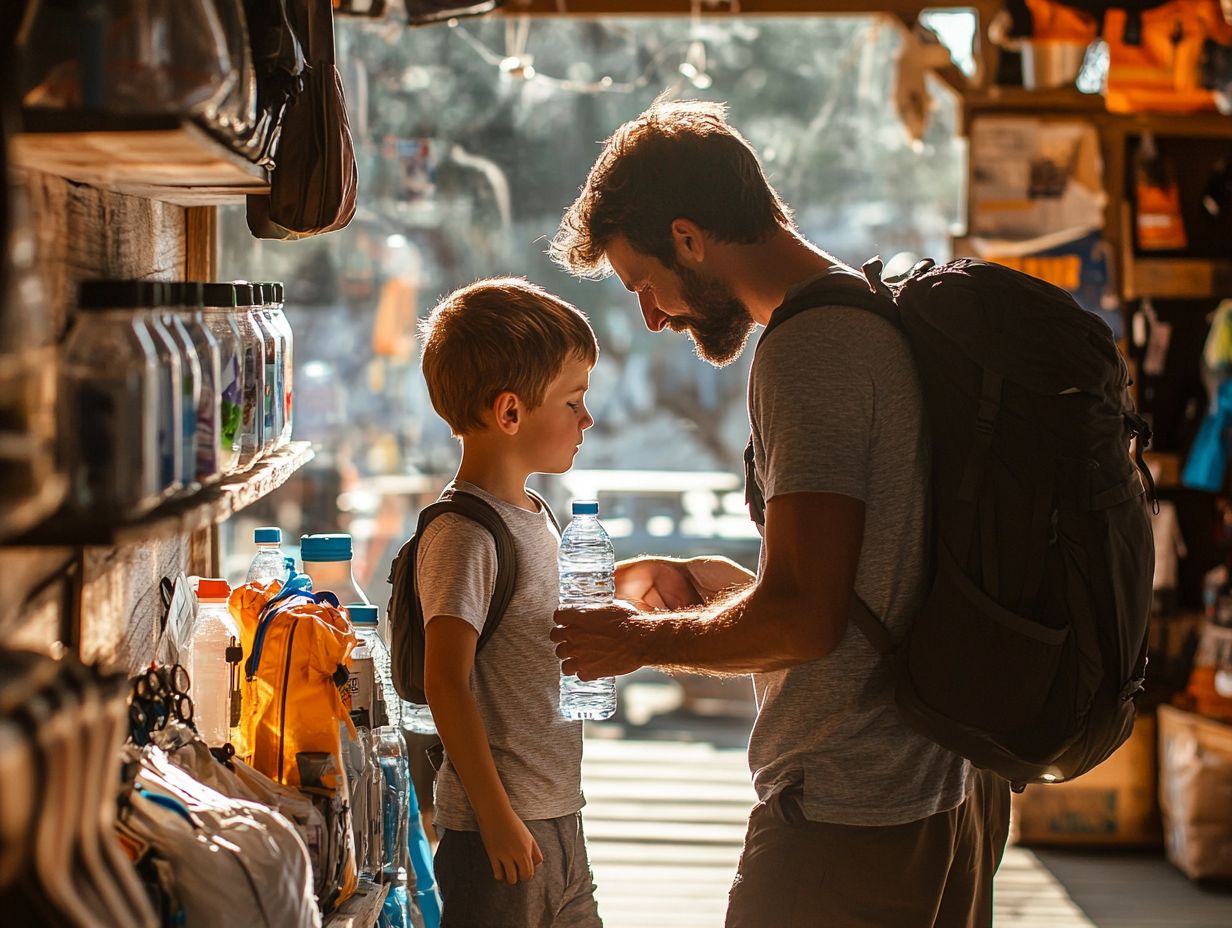
Prepare your child for adventure with essential survival gear that keeps them safe and happy! Essential survival gear for kids includes a first aid kit, a water bottle, snacks that last a long time, a flashlight, and a whistle.
How do I determine what size survival gear to get for my child?
When selecting survival gear, consider your child’s age, weight, and height. Many items, such as backpacks and clothing, come in various sizes suitable for children.
Can I pack my child’s favorite toy in their survival gear?
You can include one small comfort item if it does not take up too much space or weight. However, it is best to prioritize essential items in your child’s survival gear.
What should I look for in a durable backpack for my child’s survival gear?
When choosing a backpack, look for a sturdy material like canvas or nylon. Opt for backpacks with compartments for organization and straps that can be made longer or shorter for a better fit.
Are there any specific items I should include in my child’s first aid kit for outdoor adventures?
Include items such as insect repellent, anti-itch cream, sunscreen, and bandages of various sizes in your child’s first aid kit for outdoor adventures.
How often should I check and update my child’s survival gear?
Check and update your child’s survival gear at least once a year or before any outdoor adventure. Replace any expired items and adjust for any changes in your child’s size or needs.
Check your gear today and make sure your child is ready for their next adventure!

